During overhaul or redevelopment, we necessarily arise about the laying of wiring, pipes, laying cables, transfer of switches and sockets. All these works are associated with the stroke of the walls. We will try to find out what it is for the type of work, for which it needs and what tool for the walls of the walls is necessary.
Why do you need to stick the wall?
So, the stroke is hollowing out the grooves in the walls and the ceiling to lay the electrical wiring, pipeline systems. To put and hide electrical, antenna or telephone wires and cables, also apply a sticking.
When you install the air conditioner, the wall is also needed to stroke.
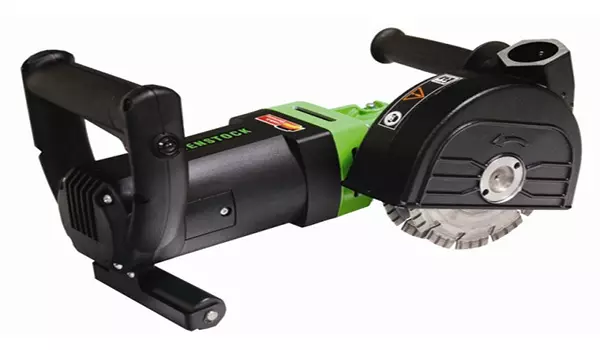
If you need to hide an existing wiring, we have been done in the thickness of plaster or concrete channel (stroke), we put the wires or cable and cable and applied.
Wall strobs and when you need to mount the internal models of electrical sockets or switches.
Such models are embedded inside the wall, so you need to continue the round hole corresponding to the size of the switch or socket.
Selection of tools depending on the wall
Strokes We carry out with the help of special tools whose choice depends on the material of the wall in which the channel must be done. For this, Bulgarian, perforator, strokesis, chisel and hammer are used. Captions on concrete partitions can be performed with a grinder, and a perforator, and a strokesome.The panel wall is processed as well as concrete. But you can not make a diagonal stroke. The maximum depth of the channel should not reach the reinforcement frame so as not to damage the structure. If the depth of the channel takes out to the reinforcement, then it is better to make an additional layer of plaster or align the surface with drywall. In the brick wall, the grooves are done with the help of strokeware.
Article on the topic: What fabric with embroidery to choose for curtains?
Bulgarian
This is a manual angular grinding machine that is used when the walls of solid concrete are stroke when you need to break through a lot of long grooves for wires. We establish a special disk for concrete work, for example, a diamond disk.
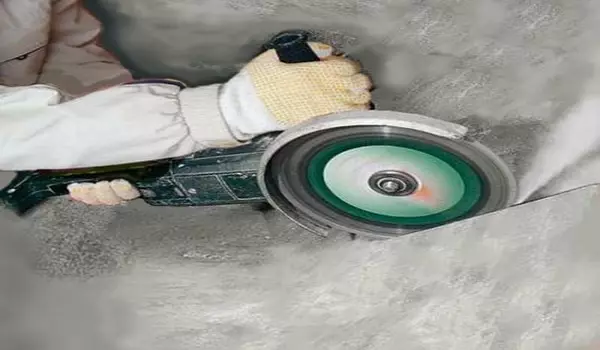
The thickness of such a disk is usually sufficient to obtain the shortcomings of the desired size.
If the width of the channel should be greater, then we make two channels in parallel at a distance of not less than 5 mm, and then the perforator hollow out the gap.
It is impossible to expand the stroke movement of the disk of the Bulgarian perpendicular to its plane: the machine is not intended for this, and it is very dangerous.
Making the shoes, we use heavy tools whose power exceeds 500 watts, and high-quality discs on concrete. Working with such a tool, do not forget about safety regulations. We work carefully, the car is tightly kept in your hands.
It is also impossible to drop the tool. It is even turning off, but the rotation of the disk will not stop immediately, and the floor surface or even legs can be damaged. Firmly tighten the disc fastening nut so that the cutter does not fly off during operation. This also happens, and this is extremely dangerous. Strobling with the help of a grinder is the perfect option. The only drawback of this tool is a large amount of dust.
Perforator
We use this tool if you need to make the shoes in the concrete. Working the perforator, insert the "blade" into it. This is a nozzle, the form of which allows you to hollow out a narrow and elongated hole corresponding to the shape of the shifter.
We do not forget that the blade when conducting a direct cut cannot be placed across the notes, since it is possible to chop pieces of wall material. If you need to make a recess for the socket, use, except for the "blades", the nozzle "pin". The bayonet is planned, and we make her shovel.
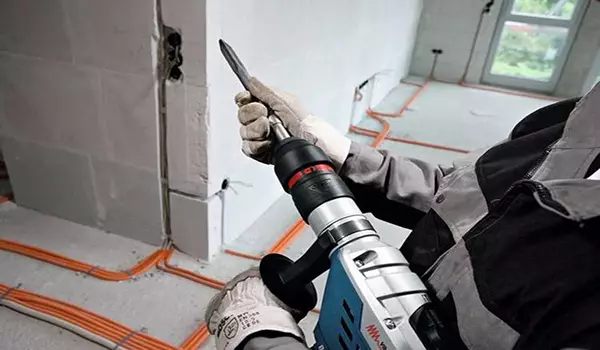
Performing the sticking of the walls by a perforator, we can also apply another method. Insert the drill in the perforator with a diameter of 6 to 10 mm and install the drill mode. We drill holes along the channel at a distance of 10 mm, then insert the blade, install the dumping mode and clutter the gaps between the holes. We also do, making planting places for sockets or switches.
Article on the topic: Laggers for the floor: the size of the bar and such a distance between the lags, the table and the floor how to strengthen, the device in the house
In order to obtain the hole of the desired depth, on the boring (at the desired distance from the tip of the borax) we wind the electrical tape, which will be the label of the desired depth.
It must be said that the channels punched with a perforator can be uneven, and they will have to be processed additionally.
To make the stroke of the walls by the perforator quickly and easily, special skills are needed, so using this tool, you need to be attentive and careful. During operation, the perforator produces a lot of noise.
Stroborez
This tool is designed specifically for the sticking of any walls and is considered the best tool for punching grooves. With the use of strokeware, we have done recesses for wiring, for water supply systems or heating. It works on the same principle as Bulgarian, but differs from it.
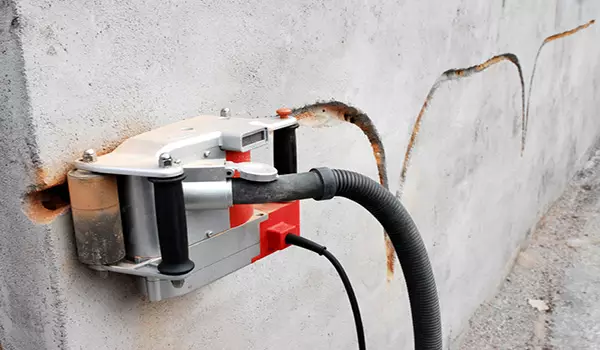
In the strokesse, not one, but several diamond disks, the distance between which can be adjusted. It is possible to adjust the depth of the short. The tool is equipped with a dust collector that sends waste into the vacuum cleaner or takes them to the side.
Starting to do channels and holes, be sure to check the thickness of the walls. If the wall is thin, take into account the loads and make the shifts closer to the ceiling or to the floor so that there were few them on the wall. If the wall thickness is more than 10 cm, the grooves cut through the shortest distance, save time and strength. In addition, do not forget to check whether there is an electrical wiring in this area.
Chisel and hammer
The cheapest, but also the most time-consuming option. These manual tools use if you need to do short-lived channels in the plastered walls. Divide manually concrete or brick is inappropriate.
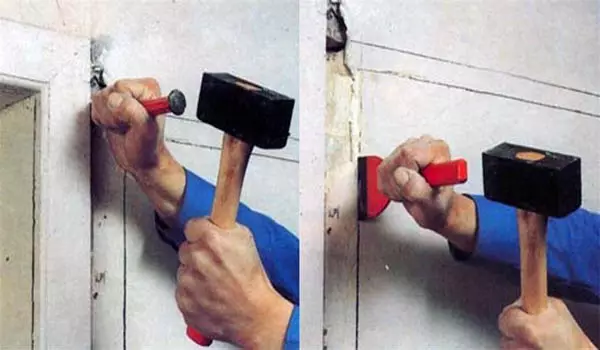
If still you have to dwell the wall with a hammer and a chisel, then we carry out simple rules:
- First we make a deepening on the placed edges;
- We carry out the rubber across the future recess, and then the hammer break through the desired groove by 5-10 mm;
- I deeper on the same depth, and in the end we get the desired channel.
Article on the topic: How to sew simple curtains yourself: master class
Knowing the features of applying tools for sticking, you can correctly choose the device and perform all work yourself.
Video "How to Strog the Wall with Stroporus"
The video shows the capabilities of a modern tool for the stroke of the walls - strokeware.
